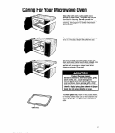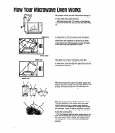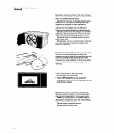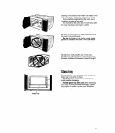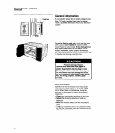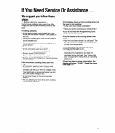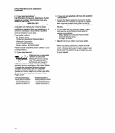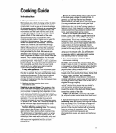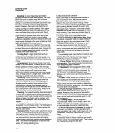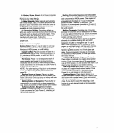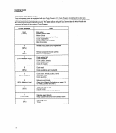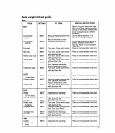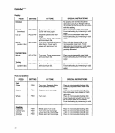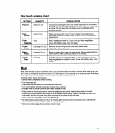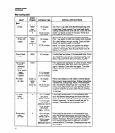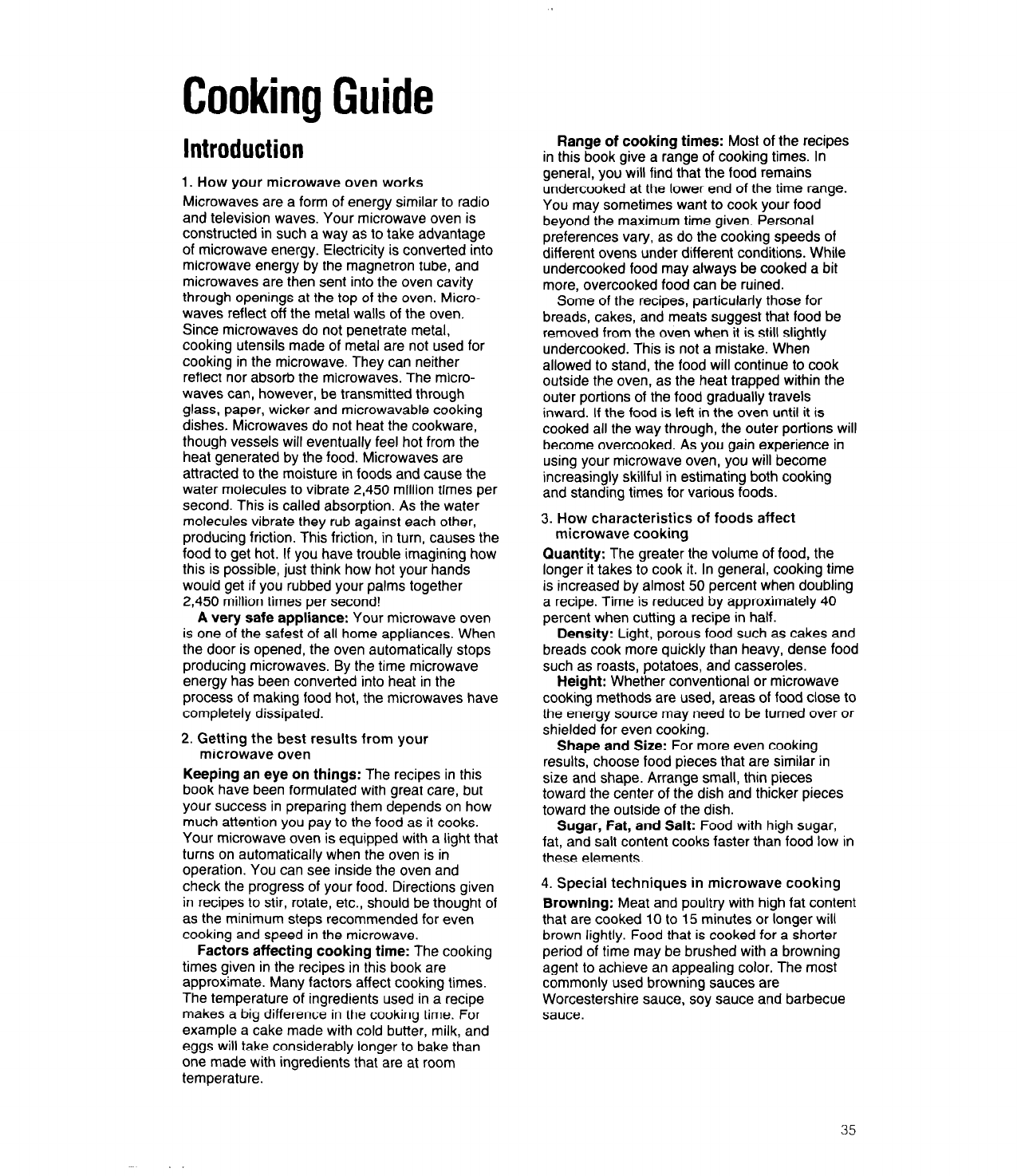
Cooking Guide
Introduction
1. How your microwave oven works
Microwaves are a form of energy similar to radio
and television waves. Your microwave oven is
constructed in such a way as to take advantage
of microwave energy. Electricity is converted into
microwave energy by the magnetron tube, and
microwaves are then sent into the oven cavity
through openings at the top of the oven. Micro-
waves reflect off the metal walls of the oven.
Since microwaves do not penetrate metal,
cooking utensils made of metal are not used for
cooking in the microwave. They can neither
reflect nor absorb the microwaves. The micro-
waves can, however, be transmitted through
glass, paper, wicker and microwavable cooking
dishes. Microwaves do not heat the cookware,
though vessels will eventually feel hot from the
heat generated by the food. Microwaves are
attracted to the moisture in foods and cause the
water molecules to vibrate 2,450 million times per
second. This is called absorption. As the water
molecules vibrate they rub against each other,
producing friction. This friction, in turn, causes the
food to get hot. If you have trouble imagining how
this is possible, just think how hot your hands
would get if you rubbed your palms together
2,450 million times per second!
A very safe appliance: Your microwave oven
is one of the safest of all home appliances. When
the door is opened, the oven automatically stops
producing microwaves. By the time microwave
energy has been converted into heat in the
process of making food hot, the microwaves have
completely dissipated.
2. Getting the best results from your
microwave oven
Keeping an eye on things: The recipes in this
book have been formulated with great care, but
your success in preparing them depends on how
much attention you pay to the food as it cooks.
Your microwave oven is equipped with a light that
turns on automatically when the oven is in
operation. You can see inside the oven and
check the progress of your food. Directions given
in recipes to stir, rotate, etc., should be thought of
as the minimum steps recommended for even
cooking and speed in the microwave.
Factors affecting cooking time: The cooking
times given in the recipes in this book are
approximate. Many factors affect cooking times.
The temperature of ingredients used in a recipe
makes a big difference in the cooking time. For
example a cake made with cold butter, milk, and
eggs will take considerably longer to bake than
one made with ingredients that are at room
temperature.
Range of cooking times: Most of the recipes
in this book give a range of cooking times. In
general, you will find that the food remains
undercooked at the lower end of the time range.
You may sometimes want to cook your food
beyond the maximum time given. Personal
preferences vary, as do the cooking speeds of
different ovens under different conditions. While
undercooked food may always be cooked a bit
more, overcooked food can be ruined.
Some of the recipes, particularly those for
breads, cakes, and meats suggest that food be
removed from the oven when it is still slightly
undercooked. This is not a mistake. When
allowed to stand, the food will continue to cook
outside the oven, as the heat trapped within the
outer portions of the food gradually travels
inward. If the food is left in the oven until it is
cooked all the way through, the outer portions will
become overcooked. As you gain experience in
using your microwave oven, you will become
increasingly skillful in estimating both cooking
and standing times for various foods.
3. How characteristics of foods affect
microwave cooking
Quantity: The greater the volume of food, the
longer it takes to cook it. In general, cooking time
is increased by almost 50 percent when doubling
a recipe. Time is reduced by approximately 40
percent when cutting a recipe in half.
Density: Light, porous food such as cakes and
breads cook more quickly than heavy, dense food
such as roasts, potatoes, and casseroles.
Height: Whether conventional or microwave
cooking methods are used, areas of food close to
the energy source may need to be turned over or
shielded for even cooking.
Shape and Size: For more even cooking
results, choose food pieces that are similar in
size and shape. Arrange small, thin pieces
toward the center of the dish and thicker pieces
toward the outside of the dish.
Sugar, Fat, and Salt: Food with high sugar,
fat, and salt content cooks faster than food low in
these elements.
4. Special techniques in microwave cooking
Browning: Meat and poultry with high fat content
that are cooked 10 to 15 minutes or longer will
brown lightly. Food that is cooked for a shorter
period of time may be brushed with a browning
agent to achieve an appealing color. The most
commonly used browning sauces are
Worcestershire sauce, soy sauce and barbecue
sauce.
3.5



